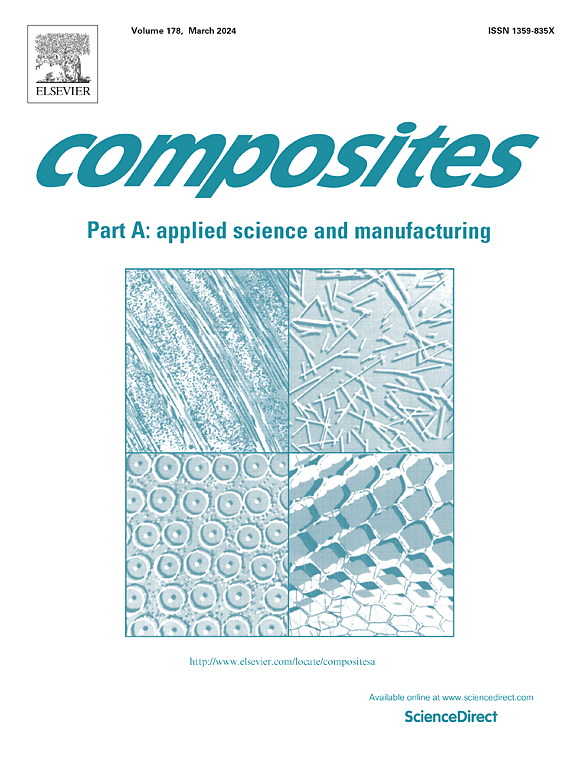IF 8.1
2区 材料科学
Q1 ENGINEERING, MANUFACTURING
Composites Part A: Applied Science and Manufacturing
Pub Date : 2025-04-14
DOI:10.1016/j.compositesa.2025.108951
引用次数: 0
摘要
尽管碳纤维增强聚合物(CFRP)复合材料具有出色的机械性能和轻质特性,但也存在一些局限性,特别是:抗分层能力差和易受雷击影响。Z 形钉穿透厚度加固(TTR)技术解决了其中的第一个问题,这项研究是对 Z 形钉碳纤维增强聚合物复合材料雷击损坏响应的首次调查。我们测试了两种类型的试样:无锚固和 0.1% 碳纤维 Z 型锚固。实验结果表明,虽然 Z 形钉增强了厚度导电性,但也带来了新的复杂性。在雷电事件中,强电流浪涌会导致碳纤维销和相邻树脂袋分解,从而造成局部损坏、分层面积增大,以及与无销钉层压板相比残余强度降低。而碳纤维 Z 销钉层压板由于销钉的高效热传导,散热更快。本研究从一个新的角度探讨了在飞机结构中应用 Z 销钉技术的潜在优势和相关挑战。本文章由计算机程序翻译,如有差异,请以英文原文为准。

An experimental investigation into the lightning strike response of Z-pinned composite laminates
Despite their outstanding mechanical performance and lightweight characteristics, carbon fibre reinforced polymer (CFRP) composites also have some limitations, notably: poor delamination resistance and vulnerability to lightning strikes. Z-pinning through-thickness reinforcement (TTR) technology addresses the first of these and this research represents the first investigation on the lightning strike damage response of Z-pinned CFRP composites. Two types of specimens were tested: unpinned and 0.1% carbon-fibre Z-pinned. Experimental results reveal that while Z-pinning enhances through-thickness electrical conductivity, it introduces new complexities. During lightning events, the intense current surge causes the carbon-fibre pins and adjacent resin pockets to decompose, resulting in localised damage, larger delamination areas, and reduced residual strength compared to unpinned laminates. Carbon-fibre Z-pinned laminates, however, dissipate heat more rapidly due to the efficient heat transfer facilitated by the pins. This study offers a novel perspective on the potential advantages and challenges associated with the application of Z-pinning in aircraft structures.
求助全文
通过发布文献求助,成功后即可免费获取论文全文。
去求助
来源期刊

Composites Part A: Applied Science and Manufacturing
工程技术-材料科学:复合
CiteScore
15.20
自引率
5.70%
发文量
492
审稿时长
30 days
期刊介绍:
Composites Part A: Applied Science and Manufacturing is a comprehensive journal that publishes original research papers, review articles, case studies, short communications, and letters covering various aspects of composite materials science and technology. This includes fibrous and particulate reinforcements in polymeric, metallic, and ceramic matrices, as well as 'natural' composites like wood and biological materials. The journal addresses topics such as properties, design, and manufacture of reinforcing fibers and particles, novel architectures and concepts, multifunctional composites, advancements in fabrication and processing, manufacturing science, process modeling, experimental mechanics, microstructural characterization, interfaces, prediction and measurement of mechanical, physical, and chemical behavior, and performance in service. Additionally, articles on economic and commercial aspects, design, and case studies are welcomed. All submissions undergo rigorous peer review to ensure they contribute significantly and innovatively, maintaining high standards for content and presentation. The editorial team aims to expedite the review process for prompt publication.
 求助内容:
求助内容: 应助结果提醒方式:
应助结果提醒方式:


